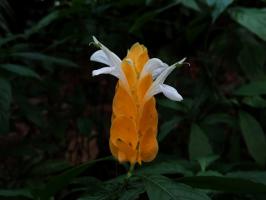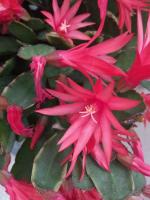1、 Curing method
1. Light: it is more suitable for the environment with sufficient light. Try to put it in a place with good sunshine conditions. But we should pay attention to prevent sunburn in summer and ensure sufficient light in winter
2. Moisture: pay attention to watering the goose foot grass. Wait until its soil is completely dry. You can water it thoroughly every time. Water more in summer and less in winter, especially in winter. If you water too much, there will be rotten roots

3. Temperature: 16 ℃ - 24 ℃ is more suitable for its growth. Breeding can not exceed 30 ℃ in summer. In winter, try to breed indoors. The temperature should also be kept above 12 ℃, but do not blindly pursue the temperature and put it next to the heating or stove
4. Soil: it's better to use fertile soil for breeding goose palm grass. It's better to loosen the soil when preparing it at ordinary times, which is very good for drainage and root absorption

2、 Breeding skills
1. Pruning: most plants need to be pruned, and goose palm grass is no exception. When pruning, the dry leaves, yellow leaves and flower stems after flowering are mainly used. In addition, when serious diseases and insect pests occur, they can also be pruned appropriately to achieve the effect of disease control
2. Changing pots: changing pots is basically carried out in the spring of each year. When changing pots, the soil at the root can be properly retained. Just plant again after adding new sterilized pot soil to the flowerpot. Remember to pour water once

3、 Diagnosis and treatment problems
1. Insect pests: the round shield scale is a relatively common insect pest, which seriously affects the ornamental degree of goose palm grass. After discovery, it should be brushed immediately or sprayed with red cliff branches for dilution, and the effect is obvious
2. Starscream: Starscream is a pest that is not easy to be found at ordinary times, which seriously affects the water metabolism balance of the plant. After discovery, spray it with 40% dicofol immediately, and it will be effective soon

4、 Other issues
1. Whether it can be cultured indoors: the goose palm grass can be cultured indoors, but the indoor ventilation should be maintained to avoid pests and bacteria. It is best not to breed in the bedroom. It will absorb oxygen and release carbon dioxide at night
2. Whether it is poisonous: the juice of goose palm grass is slightly toxic. If you accidentally contact its juice during breeding, you should wash it with clean water in time. However, its toxicity is not great and will not pose a great threat. You can pay more attention to it during breeding


 jackfruit
jackfruit snake plant
snake plant hibiscus
hibiscus hydrangea
hydrangea lavender
lavender Green roses climb al...
Green roses climb al... If you don't pay att...
If you don't pay att... Management of four g...
Management of four g...



































